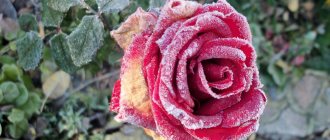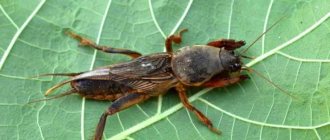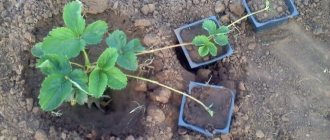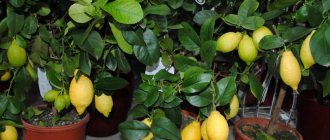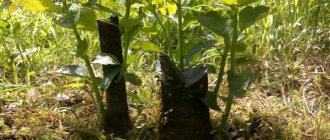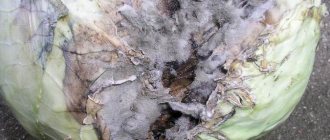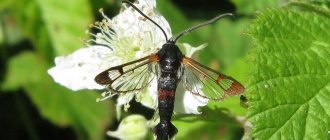Features of varieties and harm to plants
- Fact:
Some representatives prefer specific plant crops, while others indiscriminately inhabit everything that comes their way. - Fact 2:
Aphids cause serious damage to a plant when they accumulate in numerous colonies. One individual by itself will not cause much trouble. - Fact 3:
Peach aphids are divided into two categories: greenhouse and large. - Fact 4:
Aphids can destroy almost any plant. The only exceptions are, perhaps, onion and garlic plantings.
The family of numerous species of aphids belongs to the type of sucking insects of the order Coleoptera. Some representatives prefer specific plant crops, while others indiscriminately inhabit everything that comes their way. But they all have one thing in common - they are terrible pests that mercilessly suck the life-giving juices out of plants.
General characteristics
Aphids cause serious damage to a plant when they accumulate in numerous colonies. One individual by itself will not cause much trouble. But the trouble is, the small insect will not be left alone, as it multiplies very quickly and numerously. Therefore, in a short time, huge squads form on the green victim and begin to form necrotic spots in those places where they intensively absorb sap from the plant.
And the larger the population, the more extensive the damage . Some types of aphids (for example, grape phylloxera) are quarantine pests. Others cause galls and other various pathologies.
Controlling aphids using natural enemies
Aphids can be destroyed not only by various sprays, but also with the help of predatory insects - entomophages. They eat the pest and/or its eggs and thus keep the population under control or completely exterminate it. Entomophages can be bought in specialized stores (many are available on the Internet) or brought to your site yourself. Often this method allows you to get rid of aphids both in the greenhouse and in the garden forever.
Ladybug
This insect is capable of consuming 50-60 aphids per day, and it also destroys mealybugs, mites and a number of other pests.
The ladybug, both in adulthood and in the larval stage, is a tireless predator in the fight against aphids
Hoverfly, syrphid (Syrphidae)
The larvae of this species feed on aphids and other soft-bodied pests, including spider mites, keeping their numbers under control. During the day, the hoverfly larva eats about 200 aphids.
Hoverfly larvae, which look like fat caterpillars, eat aphids and many other pests
Green lacewing (Chrysoperla rufilabris)
The adult lacewing feeds on the nectar of flowers, but its larvae, which look like miniature alligators, are real predators. In the larval stage, the insect eats about 600 aphids, as well as other harmful insects and mites.
Green Lacewing larvae have the ability to quickly eat aphids
Aphids also feed on:
- some wasps (Aphidius);
- cicadas;
- crickets;
- ground beetles;
- earwigs (pincers);
- riders.
To attract beneficial insect predators to your plot, you should plant dill, fennel, carrots, parsley, celery, dandelion and tansy.
Big
- The founding queen of the colony is the largest insect in the family. Its gray-brown round body measures up to 5 mm. There are short whiskers on the black head. The belly and chest are decorated with two growths.
- The male has slightly smaller dimensions and the same color.
- The winged virgin is smaller (4.5 mm). Its head and sternum are black, its back is gray, and its belly is brown.
- The wingless virgin is pear-shaped, gray with black spots on the head and body. This specimen has bright colored legs – yellow and carrot.
- The egg is initially orange, then brown and finally black.
A large species lives in steppe zones and in the Crimea. It feeds on fruit and nut trees (cherry plum, almond, plum, peach, apricot). In winter, many clusters of egg clutches remain, nestled on the inside of large branches and under the trunk bark. In April, the larvae hatch, suck sap abundantly and form into adults in about a month . The founder gives up to 80 heads of offspring, the wingless virgin up to 30. Starting from the third generation, reproduction proceeds at an intensive pace. In July, winged virgins form and fly to neighboring plants to create their own populations.
If no measures are taken, by the end of summer all garden plantings will be covered with aphids. The plant's immunity suffers greatly from the life of the pest. It becomes defenseless against viruses and fungi. The sooty fungus, for example, settles on the sweet honeydew of aphids; its presence is indicated by black wet spots.
Reasons for the appearance and reproduction of aphids
The main distributor of aphids in the garden are black ants . They feed on the sweet secretions of the pest (honeydew). Many species of aphids cannot live without ants, and this union has been around for millions of years.
At an air temperature of 25 ° C , the pest multiplies more intensively . In the heat, at a temperature of 30–35°C, females almost stop giving birth to larvae. In such conditions, there is less moisture and plant juices, and all the insects’ energies are spent on survival.
With the appearance of winged individuals, insects independently move to neighboring areas and crops . This often happens when the colony is overpopulated.
In the garden and in the house, aphids can appear with infected seedlings, soil, bouquets and potted plants . Overgrown weeds and dry branches are also temporary shelters for her.
Tobacco aphid (green peach)
- The uterus is oval, greenish-yellow in color (pink tint is possible). Small, up to 2.5 mm.
- The wingless virgin is even smaller, up to 1.5-2 mm. May be pink, pale or yellow-green. Red eyes, pale mustache.
- The winged virgin is black-breasted and black-headed. The body is green with yellowish tint. The wings have no color, just transparent.
- The egg clutch is black metallic in color and shaped like an elongated ellipse.
Lives in Asia, Europe, North America, and the southern part of the Urals. It affects any plants (vegetables, gardens, berries, flowers, medicinal plants, greenhouses) . Reproduction occurs in May and April from overwintered eggs, when the air warms up to +20C. A mature individual is formed in 2.5-4 weeks.
Young shoots of plants, vegetables, and tobacco are affected. The leaves curl, wrinkle, and dry out. Great harm is caused to inflorescences that dry out and fall.
Modern and effective methods of combating
Chemical and biological drugs
Treatments with drugs are carried out in dry, windless weather in the morning or evening, using protective equipment: rubber gloves, and when spraying tall trees and shrubs, a respirator.
The main thing when spraying is that the solution should get into the accumulation of insects . This can be difficult in case of massive damage, as the leaves curl. That’s why it’s so important to have a good sprayer on your household.
In hot weather, drugs act faster; in cloudy and rainy weather, their effectiveness decreases. To avoid insects becoming accustomed, you should not use the same chemicals on your property year after year. Plants are sprayed with insecticides only before flowering and immediately after it, with a break of 20–40 days.
Baksin JV
The drug is used to treat stone and pome crops after flowering. Consumption rate – 20–30 g per 10 liters of water.
Fury
Broad-spectrum agent. Dosage for fruit trees – 1.5 ml per 10 liters of water, for vegetables and flowers – 1 ml per 10 liters of water. During the season, use no more than 2 times with a break of 20–25 days.
Kinmiks
It is used to kill aphids on various crops. The universal dosage of the product is 2.5 ml per 10 liters of water. The interval between treatments is 20 days, on grapes – 1 month.
Tanrek
For spraying fruit trees and shrubs, 3 ml of the product is diluted in 10 liters of water, for vegetables and flowers - 5 ml per 10 liters of water. Tanrek penetrates plants within 2 hours after treatment, and affects pests within 2–3 days. The interval between spraying is 3 weeks.
Doctor
A preparation for exterminating pests on indoor plants. The arrow briquette is inserted into the pot; the active substance penetrates into the plant through the roots when watering. Pests die after 5–10 days.
Fitoverm
Well-known biological insectoacaricide. This is a universal drug for destroying pests on vegetables, fruit trees, berries and flowers in open and protected soils.
The application rate is 8 ml per 1 liter of water for spraying vegetables, fruit trees, berry bushes and flowers in the garden, for indoor flowers - 4 ml per 1 liter of water. The effect is visible 2-3 days after application.
Entobacterin
A bacterial insecticide affects the nervous system of the pest and causes its death. The waiting period is 5 days. To prepare the solution, 10 g of the drug is diluted in 1 liter of warm water. In case of large concentrations of insects, the application rate is 5 g per 1 liter of water. Spraying is carried out at an air temperature of 25–28°C.
Traditional methods
- 100 g of tobacco is poured into 2–3 liters of boiling water and left for two days. Add water to a volume of 10 liters and spray the plants 2-3 times every 5-6 days.
- 200 g of tobacco and onion peels are poured into 10 liters of water and boiled for 2 hours. Add 200 g of chopped garlic cloves to the broth. Use after cooling.
- 1 kg of tansy stems along with inflorescences are boiled in 10 liters of water. The solution is cooled and filtered.
- 1 kg of raw or 0.5 kg of dry hot pepper is infused in 10 liters of water for 2 days. Then boil for 1 hour and leave for 2 days. Store the infusion in a dark and cool place. For spraying, 100 g of concentrate is diluted in 10 liters of water.
- 300 g of dandelion roots or 0.5 kg of dandelion leaves are poured into 10 liters of water and left for 2-3 hours. Before use, the solution is filtered.
- Before spraying, add 30–40 g of laundry soap per 10 liters to all decoctions and infusions.
House or house aphids
Divided into subspecies with distinct colors (white, red, green, black). This type of aphid is widespread everywhere, settling on indoor green pets. Aphids reproduce all year round, without going to winter .
All parts of the plant suffer from the activity of the pest: foliage, buds, new shoots. They dry, wither, fall off. The development of the plant slows down, stops and it slowly dies.
What harm does aphid cause?
Aphids pose a threat to plants. Let's figure out what exactly its negative impact is.
- Plant depletion . Aphids live on the roots or above-ground parts of crops, feeding on their juices. This leads to a decrease in green mass, premature leaf fall, pathological formations (the appearance of galls), and poor fruiting. If measures are not taken in time, the plant may die.
- Attracting other pests . Aphid excrement has a sweet taste and this attracts ants. The connection between insects is so strong that it is difficult to expel pest allies even with the help of modern chemical means of protection.
- Spread of viruses dangerous to plants . Aphids are carriers of phytopathogenic viruses. Moreover, one type of this pest can spread up to 100 varieties of phytopathogenic diseases.
The harmfulness of aphids is aggravated by their extreme fertility. The founding aphid is capable of giving rise to several generations at once, numbering tens of thousands of pests. Under favorable conditions, by the middle to end of the season, the number of aphids on one plant can increase so much that they almost completely cover all its parts suitable for feeding.
Another reason for the incredible spread of pests is passive dispersal. Species living in the root system are often washed away by water and, passing through irrigation systems, end up on other crops. And those of them that live on the above-ground parts of plants, due to their low mass, are lifted by air currents and also have the opportunity to freely capture new territories.
Root aphid
It has a yellow, green or whitish, ovoid body. The color of the head, whiskers and sternum is brown. The entire insect is covered with a waxy coating of yellow-white color. Found everywhere. In winter, females of the wingless type remain. In the spring they give birth to larval offspring. Aphids suck sap from the adventitious root system and disrupt the movement of nutrients. The plant weakens, develops inadequately and may die without active protective measures.
Signs and Symptoms of Plant Infestation
On young shoots, leaves, and buds, clusters of small insects of green, black, brown, and reddish colors are visible to the naked eye. The pest can settle on the roots. Aphids rarely damage berries and fruits.
The pest sucks juices from the tops of young shoots, leaves, buds and the plants weaken and stop growing . The shoots become bent, the leaves curl, turn yellow and fall off prematurely .
The affected parts become covered with a sticky, sweet discharge - honeydew . a sooty fungus appears on the upper side of the leaves .
Aphids reduce the winter hardiness of plants and produce fewer fruit buds. The amount of sugars and nutrients in the harvested crop is reduced. Due to contamination with aphid secretions, the marketability of vegetables and fruits decreases. With mass spread, perennial crops die within a few seasons.
Large potato aphid
- The wingless virgin has an oval body with a sharp back. Length – 4 mm, red or greenish color. Matching tail and mustache.
- The winged virgin is smaller (3.5 mm), light green, with chestnut legs and mustache.
It is found everywhere, but North America is considered its homeland. It is capable of eating all plants, but most of all it loves potato, tomato, cabbage, beet plantings, as well as home and greenhouse crops. It begins to reproduce in the spring, with the appearance of wingless specimens. Overwinters in weeds, soil or indoors. During the season, winged generations alternate with wingless ones. There are no other forms. Potato aphids spread about 50 types of viral infections.
Appearance
The size of garden aphids does not exceed 8 millimeters in length. The domestic one is even smaller - the insect is no more than half a millimeter in length.
In nature, there are a huge number of varieties of aphids (you can see in the photo what aphids look like), but these insects can only be round or oval in shape.
Their color usually matches the colors of the vegetation whose sap they feed on. In this case, most often the parasites have a black, green, red or pink body color. However, you can often see transparent aphids.
If you examine this insect under a magnifying glass, you will notice that the body of the aphid has tubercles, growths and hairs.
The head has the shape of a trapezoid. It has segmented antennae - organs of touch and hearing.
Nature has awarded aphids with tiny faceted eyes of red, black or brown color. The insect sees quite well, even being able to distinguish some bright colors.
There is no oral cavity. Instead, the insect has a proboscis, which replaces not only its mouth, but also a “working tool” for obtaining food. It is with the proboscis that the aphid pierces the shell of plants and reaches their juicy pulp.
The pest moves on three pairs of short legs, and can even jump.
There are also aphids with wings, which are not a sexual characteristic. Both female and male aphids can fly.
Hairy aphid (mealy)
- The female has oval-shaped wings, pinkish-cream color. There is a lot of fine bristles on the sides. There is a powdery coating all over the body.
- The winged individual is exactly the same, only with wings.
The distribution is widespread. Loves vineyards, citrus plants, indoor green pets and greenhouse plants. From one female there are 2000 eggs, which actively move, becoming larvae and crawling around the plant surroundings, sucking out life-giving moisture. Indoors and greenhouses, reproduction lasts all year round.
As a result of vital activity, stems, branches, vines are deformed, buds dry out, fall off, like leaves, development is inhibited, and immunity decreases.
Top products for killing aphids
Liquid insecticide with imidacloprid is successfully used to treat trees, shrubs and flowers in the garden, preventing further infection: this is both economical and an integrated approach. The best solution is if your aphid-infested garden is large and has an abundance of tall plants. 4.5 stars out of 5, 76 reviews, which for the most part give the highest possible rating to the drug. At $69.97 per gallon and your garden is healthy, this is a great alternative to professional treatments that cost 3-4 times more.
| Name | Price | Advantage |
| Garden Safe Neem Oil Extract Concentrate (HG-83179) (16 fl oz) | $14.97 | Natural substance (Neem oil), absolutely environmentally friendly use |
| Bayer Advanced 701710 2-in-1 Insect Control Plus Fertilizer Plant Spikes, 10-Spikes | $9.42 | Optimal combination of price and efficiency for potted crops and small greenhouses |
| Pack Dual-Sided Yellow Sticky Traps for Flying Plant Insect Like Fungus Gnats, Aphids, Whiteflies, Leafminers - (6x8 Inches, Twist Ties Included) | $12.99 | The first line of defense against aphids - allows you to catch insects at the colonization stage |
| Garden Safe 80422 Houseplant and Garden Insect Killer, 24-Ounce Spray | $11.35 | Contact form, does not accumulate in fruits |
| Safer Brand 5118 Insect Killing Soap – 16-Ounce Concentrate | $16.99 | Extremely economical, additional drying effect due to soap content |
| Bonide Product 951 Systemic House Plant Insect Control 8 Oz. | $8.97 | Long-term effect due to the capsule form of release |
| Bayer Advanced 701615 12 Month Tree and Shrub Protect and Feed Concentrate, 1-Gallon | $69.97 | Economical treatment of trees and shrubs |
Apple aphid, green
- The founder is wingless, green with a brown or red head.
- The male is the same, but smaller.
- Wingless females are similar to the founder.
- The winged ones have smaller dimensions, a green abdomen, a black head, legs and sternum.
- The eggs turn from light green to black.
Lives in Central Asia, Eastern Europe, and the Caucasus. Trees with pome fruits (dogwood, apple, rowan, pear, etc.) are eaten. It reproduces during the appearance of a leaf bud, transforming from a larva into a founder. The number of populations varies by region . In warm ones there are up to 17 generations. in cold ones – 6 and a little more.
Actively destroys young seedlings. On mature plants, the foliage curls, the fruits become spotted, and branches and shoots become deformed.
Life cycle
Reproduction and development of the pest begins in the spring . Larvae from eggs laid by females in autumn . They immediately begin to suck the juice of young host plants.
After molting, the larvae develop into fertile wingless females . These individuals no longer lay eggs and give birth to live larvae . Moreover, they do not need males for summer reproduction.
These larvae are ready to reproduce after 1–2 weeks. In a month, each of them is capable of producing several generations, numbering up to hundreds of thousands of individuals . In the second generation winged females are born , capable of migrating long distances, colonizing and reproducing on new plants of the same species or on closely related crops. In just one summer, up to 17 generations of winged and wingless females can appear .
The autumn colony is already heterosexual; not only winged females appear in it, but also males. They fertilize females so that they lay shiny eggs for wintering on perennial plants: weeds, shoots, tree shoots, and anthills. The next year the breeding cycle repeats again.
Rose green aphid
The stages of development differ little from each other in external characteristics: elliptical shape, green color, long tail, mustache too, brown. Distributed everywhere . It affects rose bushes and rose hips, but does not bypass apple trees, pears, and strawberries.
In winter, eggs remain, the reproduction cycle is complete. Greenhouse and greenhouse specimens breed year-round. They slow down plant growth, prevent buds from blooming, and weaken the crop’s defenses against cold weather and viral diseases.
Aphids on plants - distribution
Where do aphids come from in the garden? They originally came from their natural habitat, in which there are thousands of species. Subsequently, having settled in the garden plot, they began to live there on a permanent basis due to favorable conditions.
Most often, aphids enter cultivated areas with new plants that have not been checked for infestation. Aphids on plants can colonize from untidy neighboring areas.
Symbiosis of aphids and ants
In addition, ants also help aphids to settle - a typical symbiosis between aphids and ants. Ants “graze” aphids and receive from them in return a sweet treat - honeydew (excretion containing sugar). Ants help preserve and protect aphids from predators and parasites. They can even transfer them to other plants, and in winter they place it in their anthill.
Gall leaf aphid
- The wingless female is oval, yellow or light green.
- The winged one is smaller in size, with transparent wings and a brown body.
Found everywhere. They prefer all types of currants (black, red, white) . Development is full-cycle. When plant sap is sucked out, swellings (galls) form. The color of the growths is burgundy or yellow. Young bushes are most damaged. When the population is large, the plant dies.
Features and habitat
These insects have excellent camouflage abilities. Their shades take on the color of the plants they parasitize. Green aphids on apples, grapes, and houseplants; black aphids are observed on cherries and cherries; red aphids eat currants and gooseberries; a yellow-colored insect with a green tint parasitizes cucumbers and melons.
In most cases, aphids have an oval shape. Sometimes these insects are found in the form of a drop, a ball, an egg or an ellipse. The size of the aphid is tiny, but it can still be seen with the naked eye. Its length reaches up to 0.7 mm. In rare cases, you can find giants among them, with a size of about 7 mm.
This insect is one of those that feed on plant foods. They are equipped with a special proboscis that pierces the plant tissue and draws out all the juices from it. They can reproduce amazingly quickly, this is one of the most important characteristics of aphids. Insects come with or without porches.
An interesting cycle occurs in nature, which cannot but be paid attention to. Aphids obtain protein compounds and amino acids that are important for development and life through plant sap. During the processing of these useful substances, a suspension of sticky consistency is released, which is a favorite delicacy of flies and ants.
Scientists have noticed strange facts of cooperation between aphids and ants, who are trying in every possible way to protect their nurses from possible troubles. Moreover, ants carry aphids from one plant to another, and even hide their females in their homes from winter cold and frost. After such an observation, you have to fight not only with aphids, but also with their “guardians”.
The aphid's body is not protected by a shell, like many insects; it is soft and exposed to external influences - the aphid can easily be crushed. The insect has long limbs, but this does not mean that the aphid can move quickly. She does it slowly.
Wingless insects differ visually from winged ones. The former have a longer and thicker proboscis. The winged aphid has two pairs of wings, with the help of which it easily moves in space.
Winged aphids have a slightly different rhythm of life from wingless aphids. In autumn, eggs of a winged, fertilized female are laid. Eggs are not laid in all places.
Insects give preference to wild radish, rapeseed, and cabbage stalks. The eggs remain on these plants throughout the winter. With the arrival of spring, they turn into larvae, which develop and survive due to the cellular sap of green spaces.
Then they molt, after which the aphids reproduce. By the way, they succeed without any gender differences. As a result, a large number of insect larvae are born. Scientists who observed this process were horrified. Within one month, one female can give birth to about 10,000 insects.
Wingless aphids lead an almost sedentary lifestyle. From birth to their last days they are in one place. With the help of their proboscis, aphids feed on plant sap, receive all the components important for life and develop perfectly.
If you don’t fight it and don’t try to destroy it, then it will continue to parasitize, multiply and cause harm to the plant world. Moreover, the presence of males is absolutely not necessary.
Around mid-summer, winged representatives periodically begin to appear in the crowd of wingless females. They, in turn, move to new green areas without any problems and take great pleasure in settling down there.
Winged aphids play an important role in the continuation of their entire lineage. After all, aphids, which are unable to move, may eventually run out of food reserves and die. Migratory aphids immediately form huge colonies of similar creatures in a new place.
The end of summer is significant for these insects in that creatures of different sexes finally appear among them, between which mating occurs. With the arrival of winter frosts, insects die, leaving behind eggs, which, with the arrival of spring, will go through the same life cycle and die in the winter.
How to determine the appearance of aphids on a plant? If green spaces gradually begin to lose their attractive appearance, it is necessary to inspect them.
Typically, wingless aphids are found under plant leaves. The colonies, increased in size, now completely cover all green spaces without any embarrassment or fear. After a short contact with these insects, the leaves dry out and, after curling, die completely.
All fruit trees produce much less yield. Sometimes their fruits fall off before they ripen. Shoots and trunks of plants are bent. In addition, all damaged plants are covered with sweet secretions of aphids, which gardeners call honeydew.
If honey dew is not eaten by ants, the plant becomes infected with sooty fungus. From this it follows that the appearance of a large number of ants in frequent cases indicates that an aphid is parasitizing somewhere nearby, although the fruits of its deeds are not yet visible.
The most suitable climate for these pests is humid and warm. Only under such conditions is mass reproduction of aphids possible. It can be found in many territories, from Europe to Siberia.
Bean aphid (beet aphid)
- The founder has an oval body shape, with lateral extensions. The color can be brown, green, black and always with a waxy coating.
- The wingless females are the same as the main female.
- Winged individuals with a light belly and black head, mustache and sternum.
Distribution throughout Transcaucasia, Europe, Central Asia, North America. Damages nightshade, legumes, beet, poppy plantings, jasmine and euonymus. Leads to twisting, wrinkling, and oppression of leaves and the plant as a whole. Infects with infections and viruses, leading to death.
Description of the pest
Aphids are small sucking insects measuring 2–3 mm; some species reach 5–7.5 mm. The pest's body is soft and elliptical. The color can be green, gray, red, brown, beige, black .
The insect's head is trapezoidal in shape with antennae on the forehead. Compared to other insects, aphids have a complex visual system. The pest distinguishes a wide range of colors - from red-green to blue-violet.
Aphids pierce plant tissues with a proboscis , which in different species can be short and blunt or long and sharp. Winged individuals have two pairs of transparent membranous wings on the thoracic region, one of which is larger than the other.
The legs of aphids are long and thin; in females, on the hind legs there are glands with odorous substances that attract males. The insect's abdomen is covered with tubercles or white fluff in the form of a waxy white coating. It protects the insect from contamination and from water droplets.
Grape phylloxera
An oval yellow or brown female with a very short proboscis and the same mustache. Habitat on grape plantations in Europe, Asia, Africa, North America. Settles exclusively on grapes . According to development, it is divided into leaf and root with a full cycle. Up to 8-10 generations per season.
This is a quarantine type pest. The root system becomes covered with galls, and the foliage becomes deformed. One population is able to destroy the entire vineyard.
Nutrition
Pests live in large colonies. When they settle on a plant, they primarily infect leaves and young shoots. Aphids also eat flower buds, roots and stems of plants. As a result, the plantings weaken and gradually wither. Insects do not disdain any vegetation. Only certain species of aphids show preference for certain types of trees, shrubs or grasses.
Quite often they coexist with black ants. The fact is that honeydew (a sweetish viscous liquid that aphids secrete during their life) is what the ant eats and loves. It is for this reason that garden ants protect small pests from natural enemies: hoverflies and ladybugs.
Melon aphid (cucumber)
The body is elongated, with a pointed end. The color of the body is green (variations in shades), the mustache and legs are black. Found everywhere. Prefers melons, cucumbers, tobacco, citrus, beet plantings, eucalyptus, cotton, sesame.
The development cycle is incomplete. The season goes on with several generations of wingless females, each producing up to 50 new individuals. It is considered the most harmful aphid species.
Reproduction
Reproduction of aphids
With the arrival of warm days, a wingless female emerges from an aphid egg laid in the bark of a tree in the fall, which becomes the founder of the colony. In the spring, under favorable conditions, the female aphid reproduces parthenogenetically and gives birth to virgin individuals similar to her.
On a note!
Aphid parthenogenesis is a form of sexual reproduction in which the eggs of adult females develop without mating with males.
It is also surprising how long such an individual lives - during its relatively short life, and a virgin female lives no more than a month, she manages to reproduce several thousand creatures similar to herself.
Aphid larvae resemble adults. They grow quickly, undergoing several molts. After two weeks, the young individual already becomes sexually mature. Thus, the size of the colony increases several times. When it reaches a critical size, females with wings are born. Flying to other plants, they give life to new colonies. And only with the onset of autumn the population is replenished with full-fledged females and males. After mating, females lay eggs, which overwinter and begin a new cycle.
Cabbage aphid
In the shape of a wide oval, the color of faded green. The mustache is dark in color and short. Distributed throughout the world. In the Russian Federation, mainly in the subtropical climate. It affects the cruciferous family, especially partial to cabbage beds and radishes .
In very warm regions the development cycle is incomplete, in all others it is complete. It destroys the plant completely, clinging to it during mass reproduction.
Aphids can destroy almost any plant . The only exceptions are, perhaps, onion and garlic plantings. Phytoncides in the plant are a good natural aphid repellent, which is successfully used in folk methods of combating small harmful aphids.
How to deal with aphids: a list of methods
You can fight a dangerous pest using:
- Folk remedies are a method that often requires persistence and lengthy treatments. Usually used for the treatment of vegetable and garden fruit crops. The substances used are absolutely safe; the fruits can be eaten any day after treatment. In indoor floriculture, folk remedies are usually used for preventive purposes (to protect against aphids) or during the initial stage of infection.
- Chemical pesticides - this method is faster. However, the pesticides used can poison not only the aphids, but also your crop. Therefore, they should be used to treat garden crops 2-3 weeks before harvest, strictly following the instructions.
- Insect predators are a completely natural biological method that involves involving their natural enemies in the fight against aphids: ladybugs, hoverflies, green lacewings, etc.
- Protective plants are an auxiliary method that can be used in addition to the main one.
